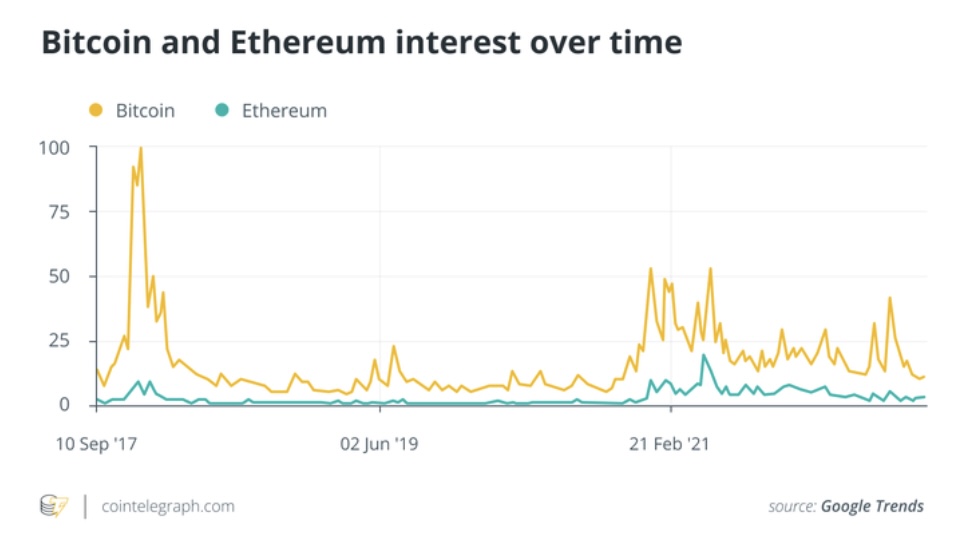As with many things in life, events are not siloed. When any type of event or action occurs, planned or unplanned, it causes changes and reactions to surrounding components. Think of a stone thrown into a pond creating ripples in the water while also altering the aquatic environment below the surface. This school of thought can also be applied to the Ethereum Merge.
The Ethereum blockchain, with its native coin Ether (ETH), is a pillar of the crypto asset industry — an industry that has become increasingly mainstream with each passing year. Ether is the second most popular altcoin, with people searching Google for “Ethereum” an average of 2.1 million times a month. ETH has risen to a value of more than $100 billion in terms of market capitalization, with the Ethereum blockchain serving as a common choice for developers building decentralized applications (DApps). In a survey conducted by the Bybit crypto exchange, Ether is the second most heard-of alternative to Bitcoin (BTC), with one in six United States adults saying that they’re familiar with it (15.4%).
The Ethereum Merge, or simply the Merge, fundamentally changes the Ethereum blockchain in pursuit of greater scalability and security while requiring less energy usage. This move may cause ripple effects for the broader crypto industry.
What is the Merge?
The Merge is part of a multi-year transition for the Ethereum blockchain, sometimes referred to as Ethereum 2.0. This broader transition essentially aims to scale the Ethereum blockchain. The official starting point of the network’s transition occurred in late 2020 with the launch of the Beacon Chain, a proof-of-stake (PoS) version of Ethereum, although Ethereum’s main proof-of-work (PoW) blockchain also continued functioning.
Expected to occur on Sept. 15, the Merge basically represents an end for the PoW chain, with all future efforts and attention focused on the PoS chain. PoW vs. PoS has been a long-standing debate in the crypto and blockchain sector. Among the mix of arguments includes PoS blockchains requiring less energy than PoW networks.
What does Ethereum (and crypto more broadly) look like post-Merge?
After the Merge, Ethereum will be a PoS blockchain, with the PoW chain becoming a thing of the past. A difficulty bomb will reduce mining rewards, making mining on the chain unattractive. Discussion has arisen regarding miners resisting the change and continuing with a forked PoW version (or versions) of Ethereum, but the main…
Click Here to Read the Full Original Article at Cointelegraph.com News…
























